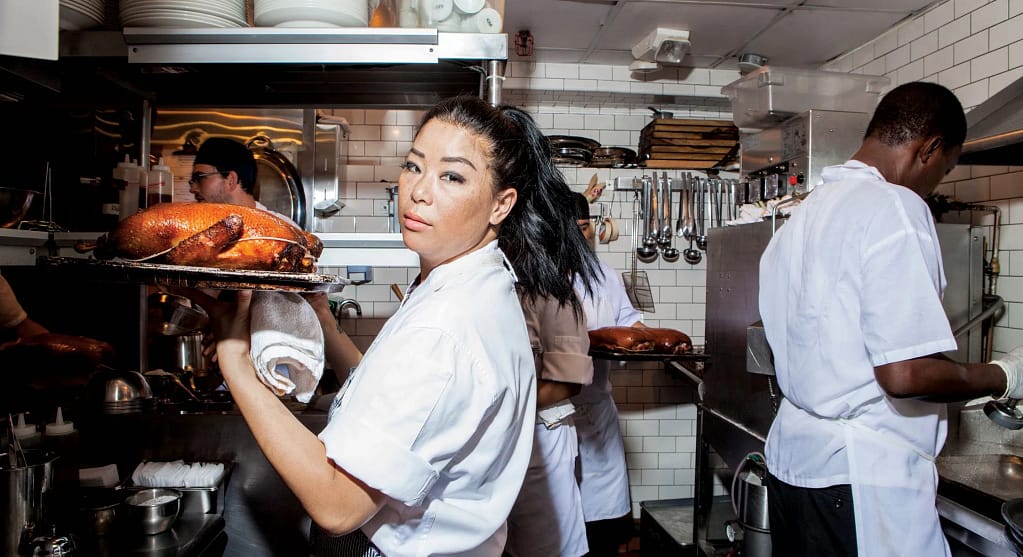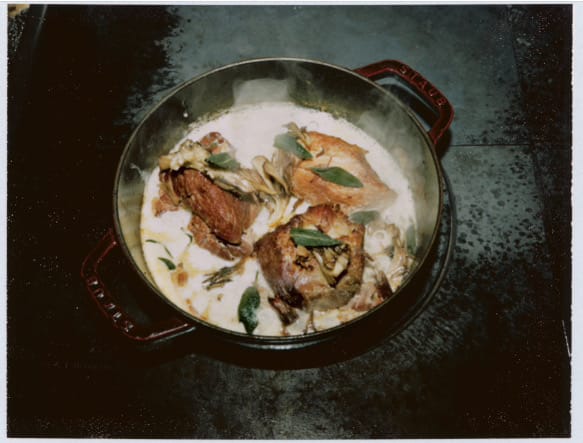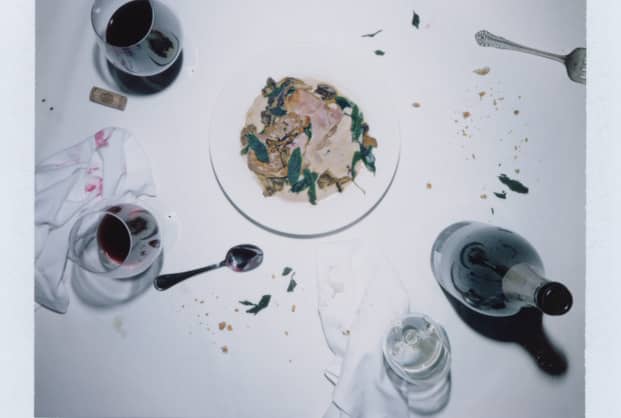Simply a pork recipe, no more, no less. I was feeling lazy on this Sunday afternoon, with the log fire heating the room comfortable, the outside almost Spring-like and a general feel that there are a few things that are actually right in this world of ours today.
I’ll get a good pork joint ordered and do this one soon.
This one comes from “Mastering the Art of Meat: A Cookbook” by New York chef, Angie Mar.

In her intro she explains why it’s the first recipe in this, a very carnivore forward book:
“This recipe is home to me, and there is a reason it’s the one I chose to share first in this book. It has roots; it has soul. I first made it when I was fifteen for Sunday supper for my family using a recipe I pulled out of one of my father’s old Italian cookbooks. My dish was a disaster—the meat was tough as hell, the texture of the curds and whey was terrible—and my brothers teased me mercilessly. So I set about practicing it—using earnings from my after-school job at the mall for groceries—every Sunday for the next six months, until I had it mastered. I still make it for my family when I go home, where I serve it with rice, because in Asian culture, a meal isn’t a meal until there’s rice on the table (even if pasta and potatoes and other starches are present). One bite and I’m a teenager again, sitting with my family, swinging the lazy Susan around to claim the best bits.
When people think of the Bea, they think of steak or game meats and we do plenty of those, but for me, this dish is the most meaningful on the menu. When I started to cook professionally, I never served it because I wanted to keep it in my back pocket—I knew when I had my own kitchen, it would become my signature. It is the perfect embodiment of the way I look at the masculine and feminine influences on food—a big, beautiful piece of meat balanced with the soft, floral jasmine rice soubise, laced with fresh herbs and earthy mushrooms—with these contrasting flavors, textures, and temperatures coming together on one plate. It’s sensual. It’s visceral. It’s deeply satisfying. And that, to me, is the ideal dish.”

INGREDIENTS
Pork Shoulder
5 pounds (3 kg) boneless pork shoulder
Kosher salt
5 tablespoons (68 g) olive oil
1 (750 ml) bottle white wine, such as Chardonnay
4 cups (928 g) whole milk
2¼ cups (510 g) heavy cream
About 4 cups (840 g) Chicken Stock (this page)
1 large onion, halved
1 sprig sage
3 sprigs thyme
2 bay leaves
1 head garlic, halved horizontally
Jasmine Rice Soubise
2 cups (440 g) uncooked jasmine rice
3 medium Spanish onions, sliced
Generous 1 cup (250 g) heavy cream
Kosher salt
Garnish
8 ounces (226 g) unsalted butter
2 bunches sage, leaves picked (about 30 leaves)
Kosher salt
2 tablespoons (27 g) olive oil
12 ounces (340 g) maitake mushrooms, separated by hand
PREPARATION
MAKE THE PORK SHOULDER: Season the pork shoulder on all sides generously with salt and place on a rack set over a rimmed baking sheet. Marinate in the refrigerator for at least 12 hours, or ideally, overnight.
Preheat the oven to 350°F. In a large Dutch oven or heavy-bottomed pot, heat the olive oil over high heat. Season the pork lightly with salt once more and add it to the pot and cook it, turning, until deep golden brown on all sides, about 15 minutes total. Remove the pork to a plate to rest.
Drain the excess fat from the pot but try to keep any crispy bits on the bottom, and return the pot to medium heat. Add the white wine, bring to a simmer, and deglaze the pot, scraping up any browned bits from the bottom. Reduce the wine until ¼ cup remains, about 15 minutes.
Return the pork to the pot and add the milk, cream, and enough stock just to cover. Tie the onion, sage, thyme, bay leaves, and garlic in a square of cheesecloth, and add the sachet to the pot as well.
Cover with a cartouche then cover with a lid. Transfer to the oven and bake until the pork is tender and falls apart when pulled with a fork or picked with hands, about 2½ hours.
MAKE THE SOUBISE: Place the rice in a large pot. Cover it with the onions and 2 cups water; do not stir.
Bring to a boil over high heat, then cover with a cartouche, reduce the heat to low, and cook until the rice is tender with a slight bite, about 30 minutes.
Working in small batches, spoon equal parts rice and onion into a food processor and pulse quickly with ¼ cup of the cream at a time, until the rice is coarse but creamy like polenta. Season lightly with salt. Transfer to a bowl and repeat with the remaining rice and onion.
JUST BEFORE SERVING, MAKE THE GARNISH:
In a small pot, melt the butter over medium-high heat until it just begins to toast, about 12 minutes. As the foam subsides and the butter takes on a noisette color, working in batches, drop in 10 to 12 sage leaves and swirl the pot so they separate and begin to fry. When crispy and curled at the edges, 35 to 45 seconds, transfer to a baking sheet lined with paper towels and season with salt. Repeat with the remaining sage leaves, reserving the butter in the pot when you are done.
In a medium sauté pan, heat the olive oil over medium-high heat. Add the mushrooms and sauté until golden and just beginning to crisp, 5 to 6 minutes. Season with salt.
Serve family-style in a large serving bowl or cut the pork into 6 individual portions. Spread the rice soubise along the bottom of a platter or bowls, top with the pork shoulder, and spoon the braising liquid over everything. Garnish with the fried sage and mushrooms, and spoon the reserved brown sage butter on top of everything.
Note: Season the meat a day in advance, and let it rest in its braising liquids for a full 24 hours. You can serve it immediately, but it’s even better if you let it sit in the refrigerator overnight, then slowly reheat it in a low oven or on the stovetop.
